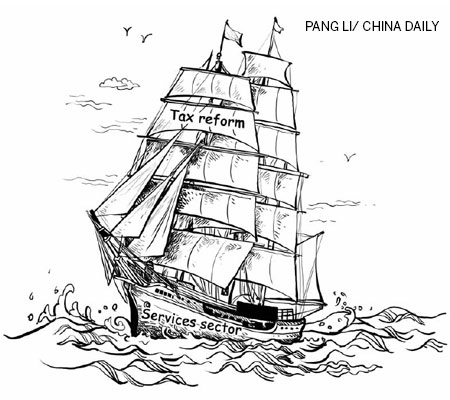Churning revenue out of VAT

China's value-added tax (VAT) pilot program, applicable to the transportation and modern services industries, has started expanding nationwide. This major expansion represents the completion of the first phase of a broader reform process to ultimately replace business tax (BT) with a modern VAT across China. This important development, in turn, will align the indirect tax system applicable to the goods sector with that of the services sector, thereby achieving efficiency right across the economy.
But how will China's VAT system compare with indirect tax systems used globally when the reforms are complete?
Internationally, modern indirect taxes, such as VAT, are now applied in more than 150 countries, including 33 of the 34 member countries of the Organization for Economic Cooperation and Development. The United States is the lone OECD member not to apply them and continues with its sub-national sales tax structure more suited to a mid-20th century economy. China's general VAT rate of 17 percent, together with its reduced rates of 6 percent for the modern services industry, and 11 percent for the transportation sector compare favourably with the average rate of 19 percent in OECD member countries.









